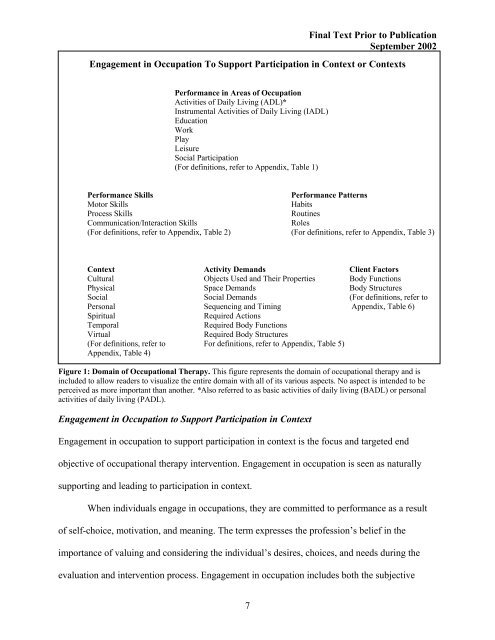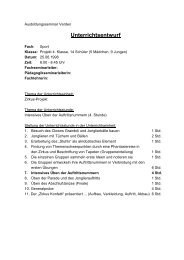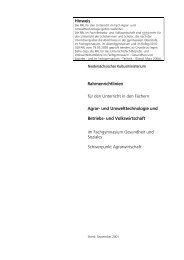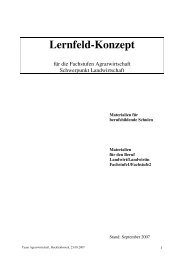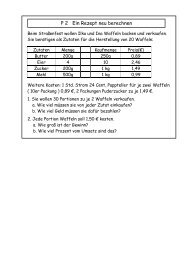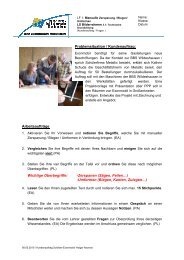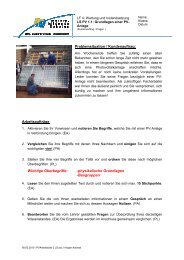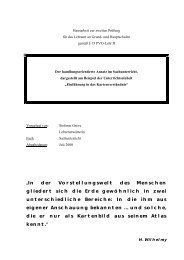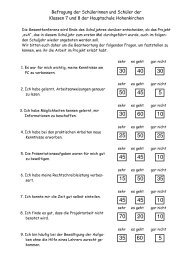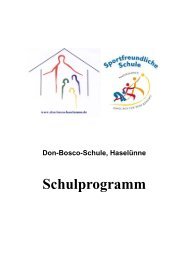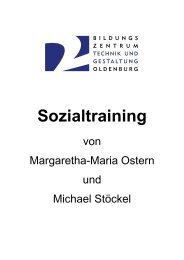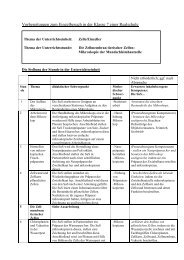occupational therapy practice framework domain and process - nibis
occupational therapy practice framework domain and process - nibis
occupational therapy practice framework domain and process - nibis
Create successful ePaper yourself
Turn your PDF publications into a flip-book with our unique Google optimized e-Paper software.
7<br />
Final Text Prior to Publication<br />
September 2002<br />
Engagement in Occupation To Support Participation in Context or Contexts<br />
Performance in Areas of Occupation<br />
Activities of Daily Living (ADL)*<br />
Instrumental Activities of Daily Living (IADL)<br />
Education<br />
Work<br />
Play<br />
Leisure<br />
Social Participation<br />
(For definitions, refer to Appendix, Table 1)<br />
Performance Skills Performance Patterns<br />
Motor Skills Habits<br />
Process Skills Routines<br />
Communication/Interaction Skills Roles<br />
(For definitions, refer to Appendix, Table 2) (For definitions, refer to Appendix, Table 3)<br />
Context Activity Dem<strong>and</strong>s Client Factors<br />
Cultural Objects Used <strong>and</strong> Their Properties Body Functions<br />
Physical Space Dem<strong>and</strong>s Body Structures<br />
Social Social Dem<strong>and</strong>s (For definitions, refer to<br />
Personal Sequencing <strong>and</strong> Timing Appendix, Table 6)<br />
Spiritual Required Actions<br />
Temporal Required Body Functions<br />
Virtual Required Body Structures<br />
(For definitions, refer to For definitions, refer to Appendix, Table 5)<br />
Appendix, Table 4)<br />
Figure 1: Domain of Occupational Therapy. This figure represents the <strong>domain</strong> of <strong>occupational</strong> <strong>therapy</strong> <strong>and</strong> is<br />
included to allow readers to visualize the entire <strong>domain</strong> with all of its various aspects. No aspect is intended to be<br />
perceived as more important than another. *Also referred to as basic activities of daily living (BADL) or personal<br />
activities of daily living (PADL).<br />
Engagement in Occupation to Support Participation in Context<br />
Engagement in occupation to support participation in context is the focus <strong>and</strong> targeted end<br />
objective of <strong>occupational</strong> <strong>therapy</strong> intervention. Engagement in occupation is seen as naturally<br />
supporting <strong>and</strong> leading to participation in context.<br />
When individuals engage in occupations, they are committed to performance as a result<br />
of self-choice, motivation, <strong>and</strong> meaning. The term expresses the profession’s belief in the<br />
importance of valuing <strong>and</strong> considering the individual’s desires, choices, <strong>and</strong> needs during the<br />
evaluation <strong>and</strong> intervention <strong>process</strong>. Engagement in occupation includes both the subjective


